2013 Death Notices
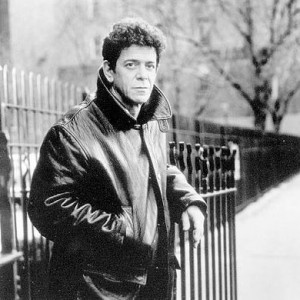 Lewis Allan “Lou” Reed (March 2, 1942 – October 27, 2013) was an American rock musician and songwriter. After being guitarist, vocalist, and principal songwriter of the Velvet Underground, his solo career spanned several decades. The Velvet Underground were a commercial failure in the late 1960s, but the group has gained a considerable cult following in the years since its demise and has gone on to become one of the most widely cited and influential bands of the era.
Lewis Allan “Lou” Reed (March 2, 1942 – October 27, 2013) was an American rock musician and songwriter. After being guitarist, vocalist, and principal songwriter of the Velvet Underground, his solo career spanned several decades. The Velvet Underground were a commercial failure in the late 1960s, but the group has gained a considerable cult following in the years since its demise and has gone on to become one of the most widely cited and influential bands of the era.
After his departure from the group, Reed began a solo career in 1972. He had a hit the following year with “Walk on the Wild Side”, but subsequently lacked the mainstream commercial success its chart status seemed to indicate. In 1975, Reed released a double album of feedback loops, Metal Machine Music, upon which he later commented, “No one is supposed to be able to do a thing like that and survive.” Reed was known for his distinctive deadpan voice, poetic lyrics and for pioneering and coining the term ostrich guitar.
In 1964, Reed moved to New York City and began working as an in-house songwriter for Pickwick Records. In 1964, he scored a minor hit with the single “The Ostrich,” a parody of popular dance songs of the time, which included lines such as “put your head on the floor and have somebody step on it.” His employers felt that the song had hit potential, and arranged for a band to be assembled around Reed to promote the recording. The ad hoc group, called “The Primitives,” included Welsh musician John Cale, who had recently moved to New York to study music and was playing viola in composer La Monte Young’s Theater of Eternal Music, along with Tony Conrad. Cale and Conrad were both surprised to find that for “The Ostrich,” Reed tuned each string of his guitar to the same note. This technique created a drone effect similar to their experimentation in Young’s avant-garde ensemble. Disappointed with Reed’s performance, Cale was nevertheless impressed by Reed’s early repertoire (including “Heroin”), and a partnership began to evolve.
Read more at: http://en.wikipedia.org/wiki/Lou_Reed
William Froug (May 26, 1922 – August 25, 2013) was an Emmy award-winning American television writer and producer. His producing credits include the series The Twilight Zone, Gilligan’s Island and Bewitched. In addition he wrote teleplays for The Dick Powell Show, Charlie’s Angels and The New Twilight Zone. He authored numerous books on screenwriting, including Screenwriting Tricks of the Trade, Zen and the Art of Screenwriting I and II, The Screenwriter Looks at The Screenwriter and How I Escaped from Gilligan’s Island: Adventures of a Hollywood Writer-Producer, published in 2005 by the University of Wisconsin Press.
William Froug was born in Brooklyn borough of New York City in May 1922 and placed for adoption through the Louise Wise agency there. Soon after he was adopted by William and Rita Froug of Little Rock, Arkansas where he spent his childhood before the family moved to Tulsa, Oklahoma (Froug’s Department Stores). He graduated from Little Rock Senior High School in 1939. The family home of Froug’s grandfather, Abraham Froug, has been preserved as a Historic Home and is located adjacent to the Governor’s Mansion in the Little Rock Historic District.
Froug attended, and graduated from, the renowned Journalism School at the University of Missouri, Columbia in 1943 before enlisting in the U.S. Navy. He was selected for the V7 Navy Officer Training Program at Columbia University and graduated as one of the “90 Day Wonder’s”. He served as an officer aboard a Subchaser stationed at Pearl Harbor before taking command of his own ship, USS PC800, in 1945 at Eniwetok Atoll.
For decades, Froug’s books were used as textbooks in film schools around the World. In, “The Ultimate Writer’s Guide to Hollywood”, the author, Skip Press, describes “Screenwriting Tricks of the Trade” as, “one of the best screenwriting books I’ve ever read” and in his “Top 10 Hollywood Reads”. He taught advanced screening writing courses in several countries in addition to colleges in Hawaii and Florida after his retirement. He found much joy in mentoring and was proud of the success of so many of his students.
Roger Ebert once wrote of Froug, ” I know an old writer. His name is William Froug, he lives in Florida and if you look him up on Amazon, you will see he is still writing brilliant and useful books about screenwriting and teleplays. He is not merely as sharp as a tack, he is the standard by which they sharpen tacks. If he had been advising the kid, the kid would have made a better movie, and if he had been advising the director of, “The Man in the Chair” we would have been spared the current experience. Just because you’re old doesn’t mean you have to be a decrepit caricature. One thing that keeps Froug young is that, unlike Flash Madden, he almost certainly does not sit on an expressway overpass guzzling Jack Daniels from a pint bottle”.
In 2011, Froug was selected as one of the Emmy Legends of Television by the Archive of American Television. His interview is available online at EmmyLegends.org
Bill Froug was a multi-talented, highly successful and creative presence across the many mediums of, Radio, Television and Film and an effective and talented educator and mentor during his years of teaching. He made a difference and a large contribution.
Read more at: http://en.wikipedia.org/wiki/William_Froug
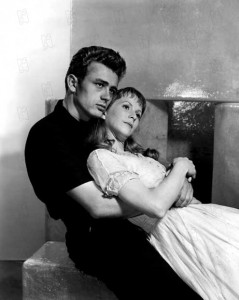 Julia Ann “Julie” Harris (December 2, 1925 – August 24, 2013) was an American stage, screen, and television actress. She won five Tony Awards, three Emmy Awards and a Grammy Award, and was nominated for an Academy Award. In 1994, she was awarded the National Medal of Arts. She was a member of the American Theatre Hall of Fame and received the 2002 Special Lifetime Achievement Tony Award.
Julia Ann “Julie” Harris (December 2, 1925 – August 24, 2013) was an American stage, screen, and television actress. She won five Tony Awards, three Emmy Awards and a Grammy Award, and was nominated for an Academy Award. In 1994, she was awarded the National Medal of Arts. She was a member of the American Theatre Hall of Fame and received the 2002 Special Lifetime Achievement Tony Award.
Harris’s screen debut was in 1952, repeating her Broadway success as the monumentally lonely teenage girl Frankie in Carson McCullers’ The Member of the Wedding, for which she was nominated for the Academy Award for Best Actress. That film also preserves the original Broadway cast performances of Ethel Waters and Brandon deWilde. That same year, she won her first Best Actress Tony for originating the role of insouciant Sally Bowles in I Am a Camera, the stage version of Christopher Isherwood’s Goodbye to Berlin (later adapted as the musical Cabaret on Broadway in 1966 and, in the 1972 film, with Liza Minnelli as Sally Bowles). Harris repeated her stage role in the film version of I Am a Camera (1955). She also appeared in such films as East of Eden (also 1955), with James Dean (with whom she became close friends), Requiem for a Heavyweight (1962), with Paul Newman in the private-detective film Harper (1966), and Reflections in a Golden Eye (1967).
Harris played the ethereal Eleanor Lance in The Haunting (1963), director Robert Wise’s screen adaptation of a novel by Shirley Jackson, a classic film of the horror genre. Another cast member recalled Harris maintaining a social distance from the other actors while not on set, later explaining that she had done so as a method of emphasizing the alienation from the other characters experienced by her character in the film.
She reprised her Tony-winning role as Mary Todd Lincoln in 1973’s play The Last of Mrs. Lincoln in the film version, which appeared in 1976. Another noteworthy film appearance was in the World War II drama The Hiding Place (1975).
Harris received ten Tony Award nominations, more than any other performer. She also held the record for most Tony wins (five) until Angela Lansbury tied her in 2009. Lansbury and Audra McDonald are the only other performers to have had five acting Tony Award wins. In 1966, Harris won the Sarah Siddons Award for her work in Chicago theatre. Her Broadway credits include The Playboy of the Western World, Macbeth, The Member of the Wedding, A Shot in the Dark, Skyscraper, And Miss Reardon Drinks a Little, Forty Carats, The Glass Menagerie, A Doll’s House and The Gin Game.
Read more at: http://en.wikipedia.org/wiki/Julie_Harris
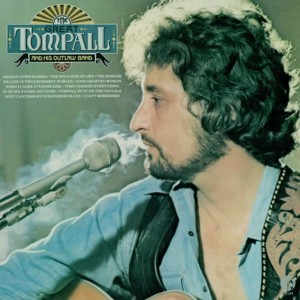 Thomas Paul ‘Tompall’ Glaser (September 3, 1933 – August 13, 2013) was an American country music artist. He was born in Spalding, Nebraska in 1933.
Thomas Paul ‘Tompall’ Glaser (September 3, 1933 – August 13, 2013) was an American country music artist. He was born in Spalding, Nebraska in 1933.
Active since the 1950s, he recorded solo artist and with his brothers Chuck and Jim in the trio Tompall & the Glaser Brothers. Tompall Glaser’s highest-charting solo single was Shel Silverstein’s “Put Another Log on the Fire”, which peaked at No. 21 on the Billboard Hot Country Singles (now Hot Country Songs) charts in 1975 and appeared with Willie Nelson, Waylon Jennings, and Jessi Colter on the album Wanted! The Outlaws. The Glaser Bros. also were back-up singers for Marty Robbins in the 1950s.
On the 1976 compilation Wanted! The Outlaws – Waylon Jennings pushed for his inclusion on what would be the first country album to sell a million copies — seemed to set Tompall Glaser up for stardom, but it didn’t quite turn out that way. He delivered one more album for MGM, 1975’s The Great Tompall and His Outlaw Band, before leaving for ABC, where he delivered the confusingly titled Tompall Glaser and His Outlaw Band in 1977, following it later that year with Wonder of It All. These two records sounded slicker than any of his MGM work, yet that didn’t help him gain a larger audience. Soon enough, Tompall blew whatever money he had from Wanted!, fell out with Waylon, and patched up his relationship with his siblings, and the Glaser Brothers signed with Elektra’s new Nashville branch in 1978.
Tompall released one last solo album in 1986 — the slick Nights on the Borderline, containing revivals of both “Streets of Baltimore” and “Put Another Log on the Fire” — before selling Hillbilly Central and retreating from the spotlight.
Read more: http://en.wikipedia.org/wiki/Tompall_Glaser
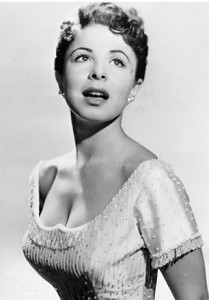 Eydie Gormé (also spelled Gorme) August 16, 1928 – August 10, 2013 was an American singer who performed solo as well as with her husband, Steve Lawrence, in popular ballads and swing. She earned numerous awards, including a Grammy and an Emmy. She retired in 2009, and is survived by Lawrence who continues to perform as a solo act.
Eydie Gormé (also spelled Gorme) August 16, 1928 – August 10, 2013 was an American singer who performed solo as well as with her husband, Steve Lawrence, in popular ballads and swing. She earned numerous awards, including a Grammy and an Emmy. She retired in 2009, and is survived by Lawrence who continues to perform as a solo act.
Gormé was born as Edith Gormezano (census sources indicate Edith Garmezano) in The Bronx, New York in 1928, the daughter of Fortuna and Nessim Garmezano. Her father was a tailor. She was a cousin of singer-songwriter Neil Sedaka. Her parents were Sephardic Jewish immigrants, her father from Sicily and her mother from Turkey.
She graduated from William Howard Taft High School in 1946 with Stanley Kubrick in her class.
Gorme worked for the United Nations as an interpreter, using her fluency in the Ladino and Spanish languages, while singing on Ken Greenglass’ band during the weekends.
In 1953, Gormé made her first television appearance, and met her future husband, when she and singer Steve Lawrence were booked to the original The Tonight Show, hosted by Steve Allen.
In 1958, they starred together in The Steve Lawrence-Eydie Gorme Show, a summer replacement for the Tonight Show.
During the 1970s, the two made guest appearances on The Tonight Show Starring Johnny Carson with either Eydie appearing as the guest and going into her song with Steve suddenly coming out from backstage and joining her, or the other way around.
Gormé and Lawrence were married in Las Vegas on December 29, 1957. They became famous on stage for their banter, which usually involved tart, yet affectionate, and sometimes bawdy, references to their married life, which remained a feature of their live act. They had two sons. In 1995, Gormé and Lawrence were honored for their lifetime contribution to music by the Songwriters Hall of Fame.
Gormé died on August 10, 2013, six days shy of her 85th birthday, at Sunrise Hospital & Medical Center in Las Vegas following a brief, undisclosed illness. Her husband, Steve Lawrence, was at her bedside, along with their surviving son, David. She is also survived by her granddaughter.
“Eydie has been my partner on stage and in my life for more than 55 years. I fell in love with her the moment I saw her and even more the first time I heard her sing. While my personal loss is unimaginable, the world has lost one of the greatest pop vocalists of all time.” – Steve Lawrence after her death.
Read more at: http://en.wikipedia.org/wiki/Eydie_Gorm%C3%A9
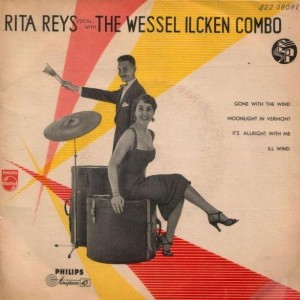 Rita Reys (born Maria Everdina Reijs; 21 December 1924 – 28 July 2013) was a jazz singer from the Netherlands. At the 1960 French jazz festival of Juan-les-Pins, she received the title, “Europe’s first lady of jazz”.
Rita Reys (born Maria Everdina Reijs; 21 December 1924 – 28 July 2013) was a jazz singer from the Netherlands. At the 1960 French jazz festival of Juan-les-Pins, she received the title, “Europe’s first lady of jazz”.
Reys was born in Rotterdam in 1924 into an artistic family. Her father was a violin player and conductor, her mother a dancer. At home, there was virtually no jazz music. Her parents preferred light classical music, so Rita grew up with the sounds of Tchaikovsky and Chopin. As a teenager, Rita nonetheless entered and won many local talent competitions.
In the Netherlands, Rita started to perform more regularly with the trio of pianist Pim Jacobs, whom she already knew from his playing with Wessel. After a show in the city of Groningen, during the drive back home in a minivan, he suddenly proposed to her, while guitarist Wim Overgaauw and Pim’s brother, bassist Ruud Jacobs, were sleeping in the back. Their “marriage in jazz” even made news headlines. On their wedding day, the mayor of Hilversum (one of the Dutch music ’headquarters’) presented the happy couple with the first copy of their album Marriage in Modern Jazz (the album that would win Rita her first Edison award).
That same year, Rita and the Pim Jacobs Trio won the Juan Les Pins Jazz Festival in France, where Rita was named Europe’s first lady of jazz, a title she would carry with grace for the rest of her career. The 1960s ended with one of the greatest high points in Rita’s career: in 1969 she was the first Dutch jazz singer to perform at the New Orleans Jazz Festival, where she played with, among others, Zoot Sims and Milt Hinton, accompanied by Pim on piano. She became a Citizen of Honor of New Orleans in 1980.
Read more at: http://en.wikipedia.org/wiki/Rita_Reys
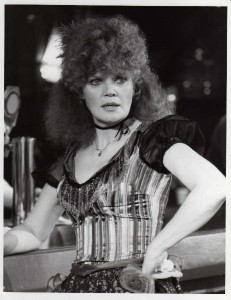 Eileen Brennan (September 3, 1932 – July 28, 2013) was an American actress of film, television, and theater. Brennan is best known for her role as Doreen Lewis in Private Benjamin, for which she received an Oscar nomination for Best Supporting Actress. She reprised the role for the TV adaptation, winning both a Golden Globe and Emmy for her performance. She received Emmy nominations for her guest starring roles on Newhart, Thirtysomething, Taxi and Will & Grace.
Eileen Brennan (September 3, 1932 – July 28, 2013) was an American actress of film, television, and theater. Brennan is best known for her role as Doreen Lewis in Private Benjamin, for which she received an Oscar nomination for Best Supporting Actress. She reprised the role for the TV adaptation, winning both a Golden Globe and Emmy for her performance. She received Emmy nominations for her guest starring roles on Newhart, Thirtysomething, Taxi and Will & Grace.
Brennan was born Verla Eileen Regina Brennen on September 3, 1932 in Los Angeles, California, daughter of Regina “Jeanne” Menehan, a silent film actress, and John Gerald Brennen, a doctor. Of Irish descent, she was raised Roman Catholic.
Brennan also worked with director Robert Moore and writer Neil Simon, appearing in Murder by Death as Tess Skeffington (1976); and The Cheap Detective (1978). Both of these movies also starred James Coco, James Cromwell and Peter Falk. She had a starring role, playing ‘Mutha’ in the 1978 movie, FM, about rock radio.
In 1980, Brennan received a best supporting actress Oscar nomination for her role as Goldie Hawn’s nasty commanding officer in Private Benjamin. She reprised the role in the television adaptation (1981–1983), for which she won an Emmy (supporting actress) as well as a Golden Globe (lead actress). She has one additional Golden Globe nomination and six Emmy nominations.
Brennan received an Emmy nomination for her guest starring role in Taxi episode “Thy Boss’s Wife” (1981). Brennan guest starred on two Murder, She Wrote episodes, “Old Habits Die Hard” (1987) and “Dear Deadly” (1994), and in 1987 she also appeared in the Magnum, P.I. episode, “The Love That Lies”.
Read more at: http://en.wikipedia.org/wiki/Eileen_Brennan
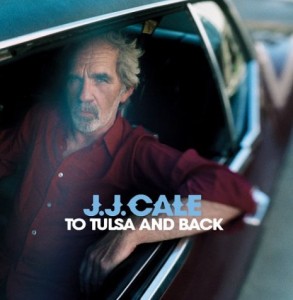 John Weldon Cale (December 5, 1938 – July 26, 2013), known as JJ Cale or J.J. Cale, was a Grammy Award-winning American singer-songwriter and musician. Cale was one of the originators of the Tulsa Sound, a loose genre drawing on blues, rockabilly, country, and jazz influences. Cale’s personal style has often been described as “laid back”.
John Weldon Cale (December 5, 1938 – July 26, 2013), known as JJ Cale or J.J. Cale, was a Grammy Award-winning American singer-songwriter and musician. Cale was one of the originators of the Tulsa Sound, a loose genre drawing on blues, rockabilly, country, and jazz influences. Cale’s personal style has often been described as “laid back”.
Songs written by Cale that have been covered by other musicians include “After Midnight” and “Cocaine” by Eric Clapton, “Clyde” by Waylon Jennings and Dr. Hook, and “Call Me the Breeze” by Lynyrd Skynyrd.
Cale was born on December 5, 1938, in Oklahoma City, Oklahoma. He was raised in Tulsa, Oklahoma, and graduated from Tulsa Central High School in 1956. Along with a number of other young Tulsa musicians, Cale moved to Los Angeles in the early 1960s, where he first worked as a studio engineer. Finding little success as a recording artist, he later returned to Tulsa and was considering giving up the music business until Clapton recorded Cale’s “After Midnight” in 1970. His first album, Naturally, established his style, described by Los Angeles Times writer Richard Cromelin as a “unique hybrid of blues, folk and jazz, marked by relaxed grooves and Cale’s fluid guitar and laconic vocals. His early use of drum machines and his unconventional mixes lend a distinctive and timeless quality to his work and set him apart from the pack of Americana roots-music purists.” In 2013 Neil Young remarked that of all the musicians he had ever heard, J.J. Cale and Jimi Hendrix were the two best electric guitar players.
Read more at: http://en.wikipedia.org/wiki/JJ_Cale
 Peter Appleyard, (OC) (26 August 1928 – 18 July 2013) was a British–born Canadian jazz vibraphonist, percussionist, and composer. He spent most of his life living and performing in the city of Toronto where for many years he was a popular performer in the city’s nightclubs and hotels. He also played and recorded with many of the city’s orchestras and been featured on Canadian television and radio programs. In the early 1970s he drew wide acclaim for his performances with Benny Goodman’s jazz sextet with which he toured internationally. In 1992, he was made an Officer of the Order of Canada in recognition of his being an “internationally renowned vibraphonist [who] has represented the Canadian jazz community across North America, Europe, the Middle East and Australia”.
Peter Appleyard, (OC) (26 August 1928 – 18 July 2013) was a British–born Canadian jazz vibraphonist, percussionist, and composer. He spent most of his life living and performing in the city of Toronto where for many years he was a popular performer in the city’s nightclubs and hotels. He also played and recorded with many of the city’s orchestras and been featured on Canadian television and radio programs. In the early 1970s he drew wide acclaim for his performances with Benny Goodman’s jazz sextet with which he toured internationally. In 1992, he was made an Officer of the Order of Canada in recognition of his being an “internationally renowned vibraphonist [who] has represented the Canadian jazz community across North America, Europe, the Middle East and Australia”.
Born in Lincolnshire, Appleyard became apprenticed to a nautical instrument maker after being forced to leave school owing to economical reasons related to the Second World War. At that time the popularity of the American Big Bands was growing in England, particularly through a major influx in big band recordings from America by jazz musicians like Benny Goodman, Duke Ellington, and Count Basie. These recordings had a strong influence on Appleyard and he decided to pursue a career as a jazz musician. He began his career in the early 1940s playing in the Boys Brigade, a youth organization. He performed as a drummer in several other British dance bands during the 1940s and, while a member of the Royal Air Force during in the mid-1940s, played in RAF bands.
Read more at: http://en.wikipedia.org/wiki/Peter_Appleyard
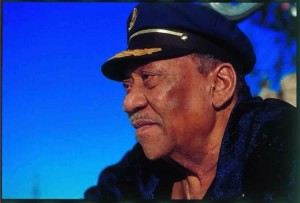 Robert Calvin “Bobby” Bland (January 27, 1930 – June 23, 2013), also known as Bobby “Blue” Bland, was an American singer of blues and soul. He was an original member of the Beale Streeters, and was sometimes referred to as the “Lion of the Blues”. Along with such artists as Sam Cooke, Ray Charles, and Junior Parker, Bland developed a sound that mixed gospel with the blues and R&B. An imitator of Frank Sinatra, he was also known as the “Sinatra of the blues”; his music was also influenced by Nat King Cole.
Robert Calvin “Bobby” Bland (January 27, 1930 – June 23, 2013), also known as Bobby “Blue” Bland, was an American singer of blues and soul. He was an original member of the Beale Streeters, and was sometimes referred to as the “Lion of the Blues”. Along with such artists as Sam Cooke, Ray Charles, and Junior Parker, Bland developed a sound that mixed gospel with the blues and R&B. An imitator of Frank Sinatra, he was also known as the “Sinatra of the blues”; his music was also influenced by Nat King Cole.
Bland was inducted into the Blues Hall of Fame in 1981, the Rock and Roll Hall of Fame in 1992, and received the Grammy Lifetime Achievement Award in 1997.
Bland was born in the small town of Rosemark, Tennessee. Later moving to Memphis with his mother, Bland started singing with local gospel groups there, including amongst others The Miniatures. Eager to expand his interests, he began frequenting the city’s famous Beale Street where he became associated with an ad hoc circle of aspiring musicians named, not unnaturally, the Beale Streeters.
Bland died on June 23, 2013 at his home in Memphis, Tennessee, after an ongoing illness. He was 83.
Read more at: http://en.wikipedia.org/wiki/Bobby_Bland